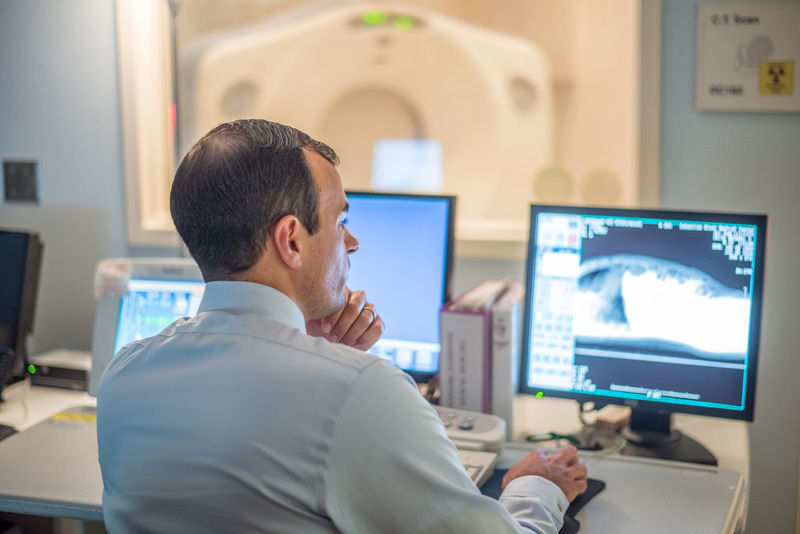Strict new training requirements for those who perform computerized tomography (CT) scans have just been issued by the Joint Commission.
CT scans are basically X-ray procedures that combine multiple images with the aid of a computer to generate cross-sectional and three-dimensional images of the inside of the body.
According to the Joint Commission, technicians in hospitals and healthcare organizations must now obtain advanced level certifications from the American Registry of Radiological Technicians (ARRT) or the Nuclear Medicine Technology Certification Board to perform these scans, to reduce the chances of patients being exposed to excessive radiation.
The regulations are needed.
The Centers for Disease Control and Prevention report that excessive exposure to radiation is a known cause of cancer as well as radiation sickness, acute radiation syndrome, prenatal problems, emotional and psychological distress and even death.
According to the Los Angeles Times, a simple setting error on a CT machine at the famed Cedars-Sinai Medical Center resulted in more than 200 different stoke victims getting brain scans at eight times the prescribed radiation levels.
The FDA’s Center for Devices and Radiological Health says those scans each delivered several hundred times the radiation of a chest X-ray. The average CT scan, it says, has roughly 100 times the radiation of a chest X-ray.
Inadequate training was a likely culprit in the Cedars-Sinai error.
Fortunately for patients in Indian River County, both hospitals here are ahead of the curve on this important health issue.
“In the year and a half I’ve been here, I have not hired anybody that is not [advanced CT] certified,” Matt McGill, Sebastian River Medical Center’s director of imaging services, told Radiology Today magazine in a recent interview.
Fourteen miles down the road at the Indian River Medical Center, Dan Cameron, director of imaging services at the Vero hospital, echoes McGill’s stance and his pride in his team.
“All of our CT techs have advanced certification in CT with the ARRT except for one tech who will be certified by the [Joint Commission] due date,” Cameron says.
In other words, both Vero-area hospitals are already in full compliance with these new Joint Commission requirements or will be before the deadline.
For those not familiar with it, the Joint Commission is an independent, non-profit body that administers the accreditation of hospitals and healthcare organizations nationwide and sets performance standards for patient care and safety.
Without this accreditation, hospitals risk losing billions in Medicare and Medicaid dollars along with multiple millions more in grants, subsidies, endowments and other sources of revenue.
That said, the Joint Commission does not regulate, accredit or oversee the operations of non-hospital-affiliated physicians, independent imaging services or the host of other facilities where radiology is used.
So, consumers need to be vigilant.
The same radiation that provides doctors with incredibly accurate diagnostic and treatment tools can – when used improperly or to excess – actually harm patients or even take their lives instead of helping them.
Asked how these new Joint Commission regulations will benefit patients, McGill says, “They’ll give the technologist the knowledge on how to adjust parameters that already exist in the equipment. The technologist can look at the patient, judge the patient’s size and the type of exam that they’re doing and adjust the computer so that the dose [of radiation] is the least required to be able to get an adequate image for the radiologist to read.”
“The staff here work with the manager or director of the department – in this case myself – and we go over the goals we have. The prototypes are then reviewed by the radiologist, by the physicist and by the original equipment manufacturer that comes in for that piece of equipment.”
McGill summarizes, “For me, you want the people who have the most knowledge to be doing the job.”
Asked if the newly required training would allow technicians to question doctors’ orders, McGill pauses and then says, “The short answer would be yes. Any technologist would be empowered to question what they would be doing. You don’t want to just do what someone says to do.”
The new certification regulations and the care taken by hospitals here are critically important, in part because of the extensive and increasing use of CT scans.
In 1980, roughly 3 million CT scans were performed nationwide. Today that figure is in the 80-90 million range. That’s nearly one-third of the U.S. population getting CT scans, and 30 times the scans could mean 30 times the errors. That’s exactly what the Joint Commission is seeking to avoid.
McGill offers the following advice for patients whose doctor orders CT scans: “I think, from the patient perspective, if they’re comfortable with their physician, they should trust that [he or she] would only order something that is medically necessary.”
“However,” McGill continues, “it is to the patient’s benefit to seek out having those tests done somewhere that utilizes Joint Commission accreditation; utilizes staff that is advanced-CT certified; utilizes equipment that is kept up to date by the original equipment manufacturer and utilizes hospital and scanning equipment that has ACR accreditation. That way, when they get their test it is with the least amount of radiation [needed for a successful procedure].”

